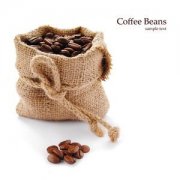Coffee basic knowledge Coffee Bean grading system

Coffee beans are also traded according to a grading system in many places, such as Kenya AA(AA), Colombia Supremo(Colombian Supremo), etc. There are many ways to grade coffee beans: coffee beans are graded by particle size, coffee beans are graded by height of growth, and coffee beans are graded by final cup performance.
Grading standards are generally defined by government agencies in each producing country, generally establishing a grading standard that not only prevents coffee farmers from planting coffee trees indiscriminately, but also encourages farmers to aim for producing high quality coffee beans. Another purpose of the grading system is to facilitate a standard for bargaining between buyers and sellers. However, in general, coffee bean appearance (particle size and defect rate) is still the main grading standard, and the grading system based on cup performance is still weak.
Forgotten coffee bean classification is a simple classification standard established by the competent government agencies of coffee producing countries to classify coffee beans into larger batches for sale so that government agencies can centrally manage the coffee bean producing Tencent Cloud Organization. Recently, however, many coffee farmers have caught up with the global trend and are moving towards breaking the established norms of market operation. This enables independent single farmers or coffee farmers associations to deal directly with international buyers and roasters. As the situation evolved, the classification criteria originally established by the governments of the producing countries gradually weakened. In these coffee-producing countries, the original goal of pursuing a single classification standard has evolved into a healthy quality competition between estates or coffee farmers 'organizations, all based on the requirements of international buyers and roasters.
However, the grade of classification is still an important naming element for coffee beans. In one of the more elegant cafes, you can see that they label the coffee bean name in the following way: Country of origin-region-grade (e.g. Guatemala-Antigua-Strictly Hard Bean, Guatemala-Antigua-Very Hard Bean). However, most of the coffee shops in the home to see only the country of origin plus the brand name or grade of one of the rough indication of the two.
There is also a level that is often confusing in the list of coffee beans in a store or importer, and that is the Peaberry (Spanish for Caracolillo) level. A round bean is an olive-like coffee bean. Under normal circumstances, a coffee fruit should contain two semi-oval flat beans, while a coffee fruit that does not normally split into two flat beans is a round bean. Some countries do not specifically sell small round beans, usually mixed with flat beans. But sometimes, usually among the more famous and expensive coffee bean varieties, round beans are also singled out and sold as special grades. Generally speaking, the flavor intensity of small round beans is more intensive than that of flat beans in the same harvest period.
For those of you who roast coffee beans at home, round beans have a great advantage: they are more evenly roasted than flat beans because of their neat caps. Especially for friends who use oven baking equipment or popcorn machine, because of the shape advantage of small round beans, the rolling in the pan is very smooth when baking, and flat beans are not conducive to even rolling because of the flat side.
Important Notice :
前街咖啡 FrontStreet Coffee has moved to new addredd:
FrontStreet Coffee Address: 315,Donghua East Road,GuangZhou
Tel:020 38364473
- Prev

Mysterious market trademark naming of coffee and bean producing countries
This indicator is easy to understand as the names of some countries, such as Kenya, Colombia, etc., which is the general name you will see on the bags of coffee beans sold in cafes. However, classification by country is still a bit rough and general, because the scope of a country is so wide, coffee is grown in more than one place in each country, and market forces
- Next

Washed or dry? The relationship between the handling method and the level name
The coffee beans baked by us as ingredients are actually the seeds in the coffee fruit. Coffee farmers give the fruit another name, coffee cherry (Coffee Cherry). If the pulp is separated from the seed, and how to dry the seed into a state that is easy to preserve, the whole process is collectively referred to as treatment. Due to the effect of the treatment process on the quality and flavor of coffee beans
Related
- Beginners will see the "Coffee pull flower" guide!
- What is the difference between ice blog purified milk and ordinary milk coffee?
- Why is the Philippines the largest producer of crops in Liberia?
- For coffee extraction, should the fine powder be retained?
- How does extracted espresso fill pressed powder? How much strength does it take to press the powder?
- How to make jasmine cold extract coffee? Is the jasmine + latte good?
- Will this little toy really make the coffee taste better? How does Lily Drip affect coffee extraction?
- Will the action of slapping the filter cup also affect coffee extraction?
- What's the difference between powder-to-water ratio and powder-to-liquid ratio?
- What is the Ethiopian local species? What does it have to do with Heirloom native species?

